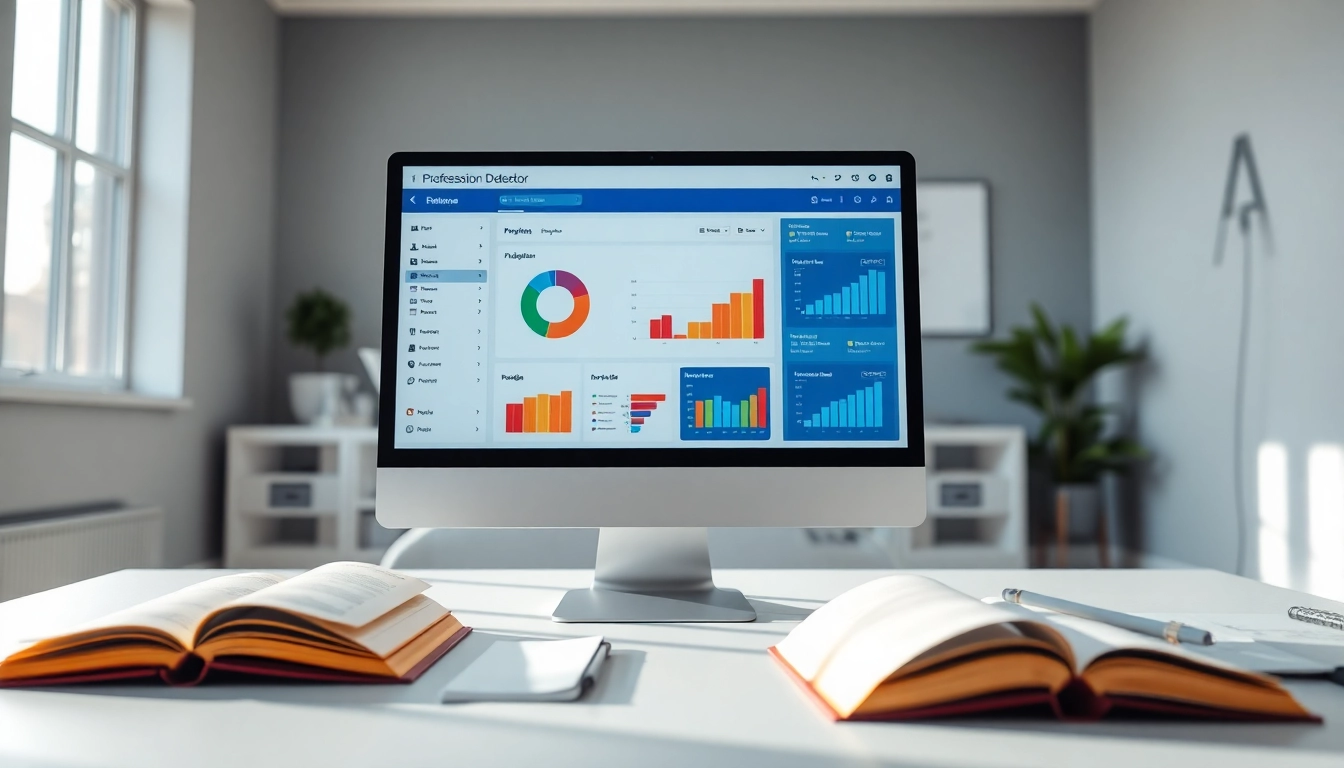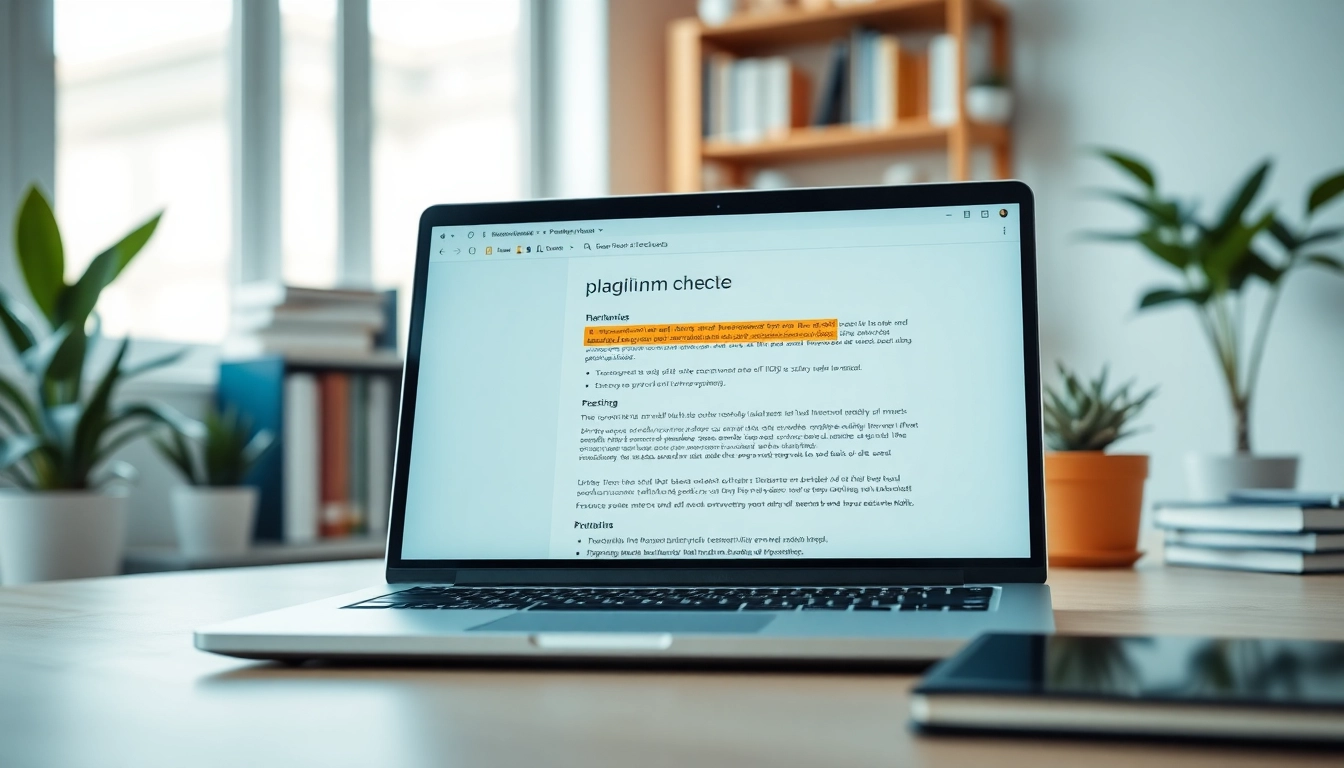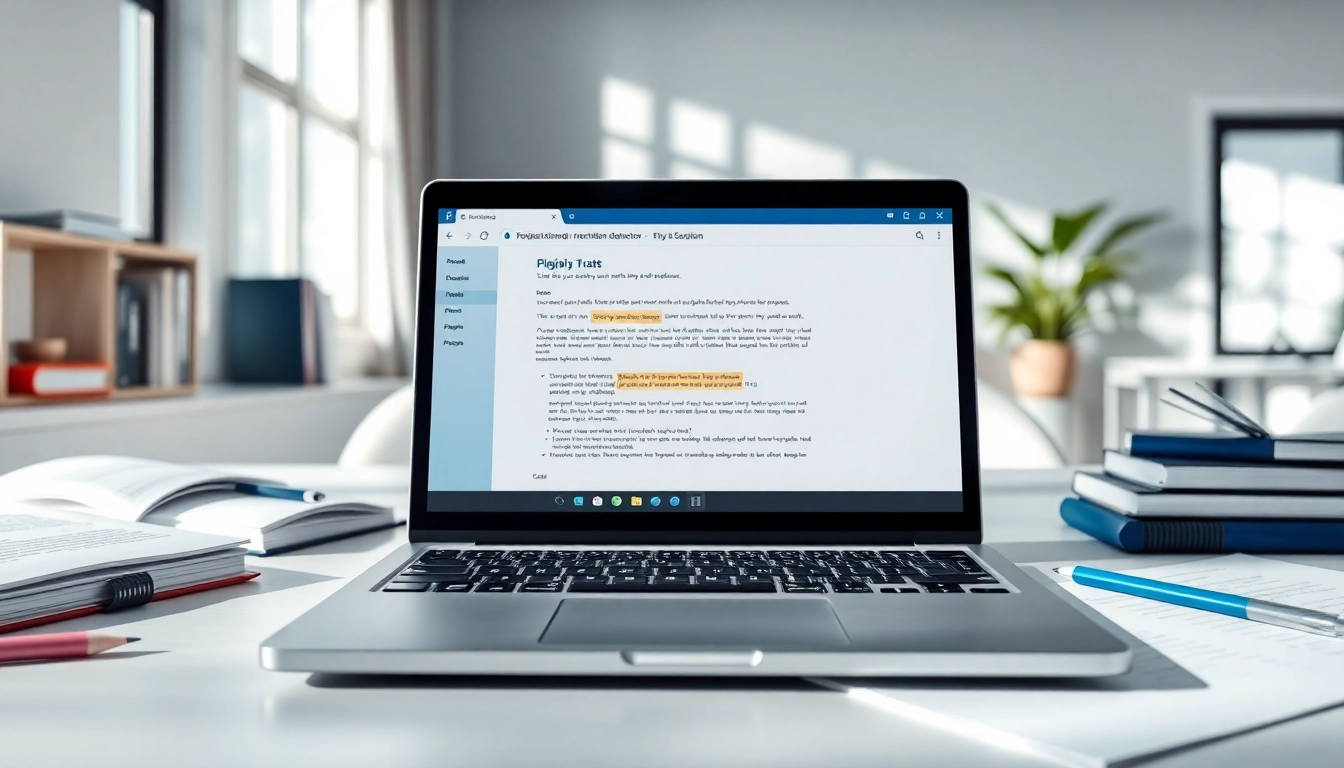Understanding Plagiarism Detection
In the digital age where information is abundant, distinguishing between original content and copied or plagiarized text has become increasingly critical. This necessity is underscored in various fields such as academia, publishing, and digital marketing, where plagiarism not only compromises integrity but can also lead to severe academic and legal repercussions. A plagiarism detector serves as an essential tool in this regard, providing users with a way to ensure the authenticity of their written work.
What is a Plagiarism Detector?
A plagiarism detector is a software application designed to identify instances of similarity between a user’s text and other existing sources, including web pages, academic papers, books, and publications. These tools typically analyze written material through algorithms that compare the inputted text against vast databases, highlighting any overlapping content and providing a percentage that indicates the level of similarity.
Types of Plagiarism Detectors Available
Plagiarism detection tools vary widely in capabilities and feature sets, with some focusing on specific fields like academic integrity while others cater to general content verification. The main types include:
- Online Plagiarism Checkers: These tools are widely accessible through web browsers and can process text in seconds. Examples include Grammarly and DupliChecker.
- Software-Based Detectors: Installed on personal computers, these programs offer robust features, including offline use and customizable reports, often used by educational institutions.
- Institutional Systems: Tailored for schools or organizations, these detectors integrate into existing systems for seamless submission and evaluation processes.
Importance of Using a Plagiarism Detector
Utilizing a plagiarism detector is paramount for maintaining integrity, especially in academic and professional settings. Here are several key reasons why these tools are indispensable:
- Preservation of Originality: Ensuring that content is original helps maintain academic integrity and fosters a culture of genuine scholarship.
- Prevention of Legal Consequences: Plagiarism can lead to lawsuits and other legal consequences, making the use of such tools a safeguard for content creators.
- Enhancement of Writing Skills: Many plagiarism detectors also offer insights into writing styles and areas that require improvement, facilitating learning and growth among writers.
Features of Effective Plagiarism Detectors
The efficacy of a plagiarism detector largely rests on its features. The best tools are equipped with user-friendly designs and advanced capabilities, ensuring they can meet the needs of diverse users—from students to professional writers.
Accuracy and Precision Metrics
An effective plagiarism detector should provide high accuracy and precision in its results. Look for tools that utilize comprehensive databases and sophisticated algorithms. Some of these detectors offer percentage-based results, allowing users to see how much of their text is original versus plagiarized, enhancing transparency.
User-Friendly Interface for Easy Access
The interface of a plagiarism detector should be intuitive, allowing users of varying technical expertise to navigate the tool with ease. A simple design can significantly reduce the time it takes to check a document, enabling workflows to remain efficient. Features like drag-and-drop document uploads and clear reporting formats enhance the user experience.
Integration with Writing Tools
Modern plagiarism detectors increasingly provide integrations with popular writing and educational tools. This compatibility allows for a seamless user experience, where plagiarism checks are just a part of the writing process. For instance, integrations with word processors like Microsoft Word or Google Docs can enable real-time checks, promoting consistent originality in writing projects.
How to Choose the Right Plagiarism Detector
Choosing the right plagiarism detector involves careful consideration of several components, including usability, feature sets, and pricing. Here’s a strategic approach to making an informed decision.
Comparison of Free vs Paid Tools
There are plenty of free options available, but they often come with limitations regarding text length, database access, or depth of analysis. Conversely, paid tools typically offer more comprehensive services, including access to extensive databases, better accuracy, and additional features like advanced grammar checks. Users should weigh their needs against their budget when selecting a tool.
Evaluating User Reviews and Ratings
Before committing to a specific plagiarism detector, it’s beneficial to look at user reviews and ratings. Websites dedicated to software reviews can provide insights into the functionality, customer support, and overall satisfaction of existing users. High ratings from academic professionals or institutions signal a reliable choice.
Common Mistakes to Avoid When Choosing
When selecting a plagiarism detector, avoid focusing solely on one criterion, such as price. Additionally, some common mistakes include:
- Not assessing the database size, which can significantly affect the tool’s detection capability.
- Ignoring the importance of customer support and user feedback.
- Falling for promotional claims without researching the tool’s actual functionality.
Optimizing Your Use of a Plagiarism Detector
To gain the utmost benefit from a plagiarism detector, users should adopt practical strategies to optimize its utility. Understanding how to navigate results and implement changes is essential for maintaining the integrity of one’s work.
Best Practices for Maximum Efficiency
Employing best practices when using a plagiarism detector can streamline the process, leading to more effective results. Key strategies include:
- Always check for the latest updates on the tool to ensure access to the most advanced features.
- Utilize the personalized suggestions provided by the software, as these can highlight specific areas of concern in your writing.
- Regularly check your work at different stages to identify potential issues early on.
Interpreting the Results Accurately
A common challenge users face is interpreting detection results. A percentage of similarity does not always indicate outright plagiarism; it may represent common phrases or industry jargon. Readers should focus on the context of flagged content, assessing whether it is appropriately cited or paraphrased.
Common Challenges and How to Overcome Them
While plagiarism detectors are powerful tools, using them can present challenges such as dealing with false positives or understanding complex reports. Here are some strategies to effectively manage these issues:
- Learn the tool’s functionality thoroughly to understand why certain similarities are flagged.
- Consult sources or guides provided by the detector for an in-depth understanding of results.
- Engage with customer support or user forums if confusion persists regarding the analysis.
Future of Plagiarism Detection Technologies
As technology continues to evolve, so too does the landscape of plagiarism detection. Staying informed about trends and innovations is crucial for content creators and academics alike.
AI and Machine Learning in Detection
The integration of AI and machine learning is reshaping plagiarism detection. Advanced algorithms can now analyze writing styles, detect paraphrasing more effectively, and even identify AI-generated content. This development is pivotal in maintaining the integrity of online content amidst the rise of AI writing tools.
Emerging Trends and Innovations
Future plagiarism detectors are likely to incorporate more sophisticated technologies, including:
- Real-time Detection: Tools aimed at providing instant feedback during the writing process.
- Customizable Alerts: Tailoring notifications based on specific thresholds of similarity for different types of work.
- Cross-Referencing AI Outputs: Capable of distinguishing AI-generated text from human writing effectively.
Impact on Academic Integrity Policies
As detection technologies evolve, academic institutions may need to revisit their integrity policies. The accessibility of plagiarism detectors will encourage universities to implement stricter guidelines, fostering an environment that emphasizes originality and proper citation. This shift could lead to enhanced education regarding proper academic practices in institutions of higher learning.




